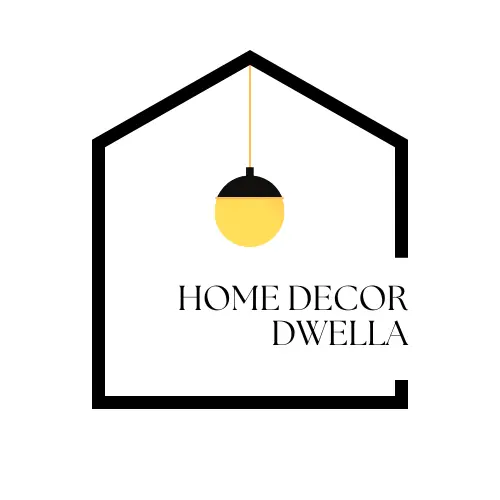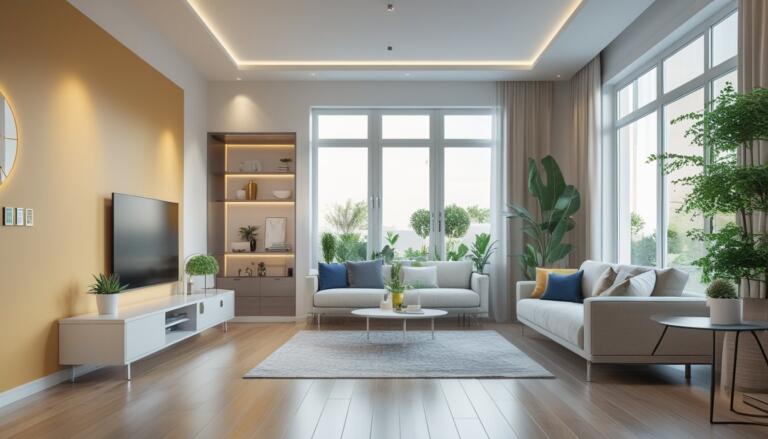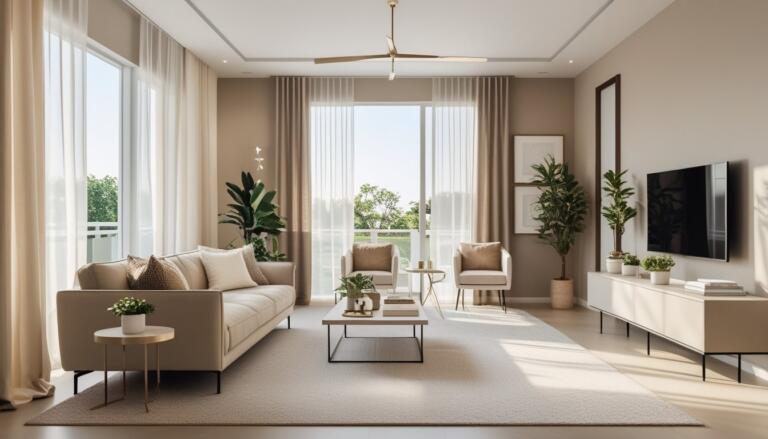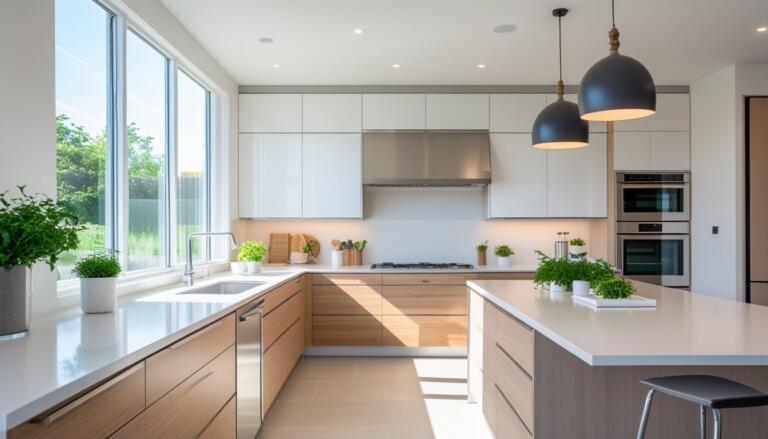9 Beach House Inspirations to Elevate Your Coastal Living Design
Beach houses offer a unique blend of relaxation and style, creating a peaceful retreat near the water. They capture the beauty of coastal living while providing comfort and charm. This article explores nine different beach house inspirations to help spark ideas for designing or decorating a coastal home.
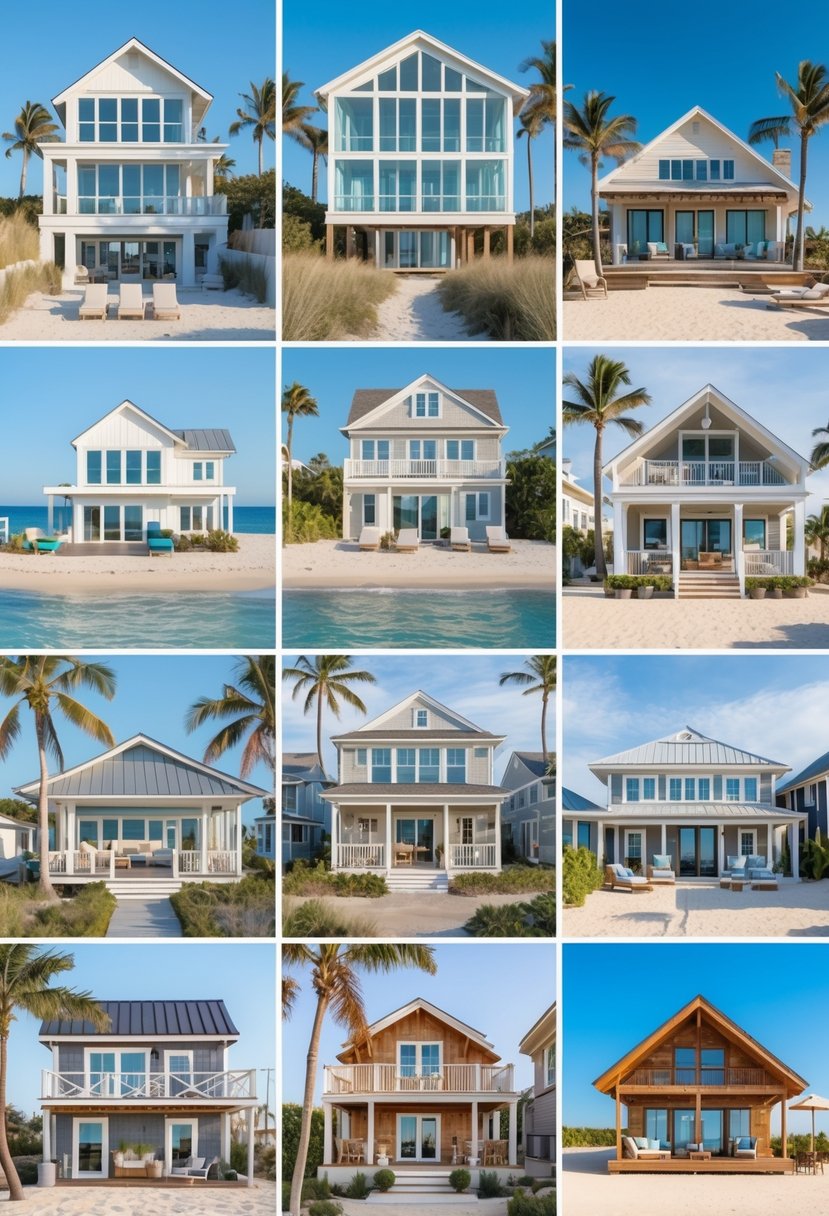
These inspirations show how to combine natural materials, light-filled spaces, and coastal colors to create a welcoming atmosphere. They highlight different styles and features that make beach houses both functional and inviting, perfect for anyone looking to enjoy life by the sea.
1) Light, airy color palettes inspired by turquoise waters and white sand
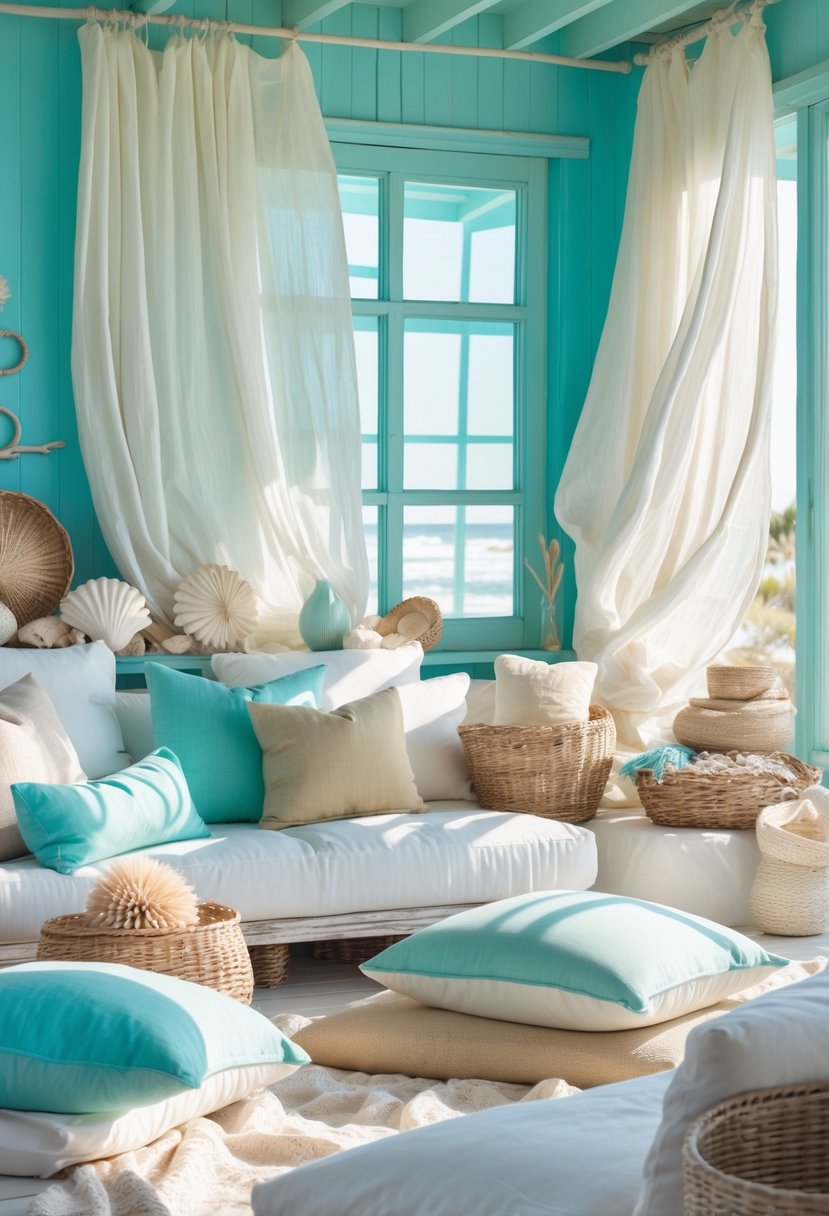
They use soft turquoise shades that mimic clear ocean water. These colors are paired with clean white tones, reflecting bright sand and sky. This palette creates a fresh and calm environment. It suits both walls and décor for a beach house feel.
2) Incorporate natural materials like driftwood and rattan furniture
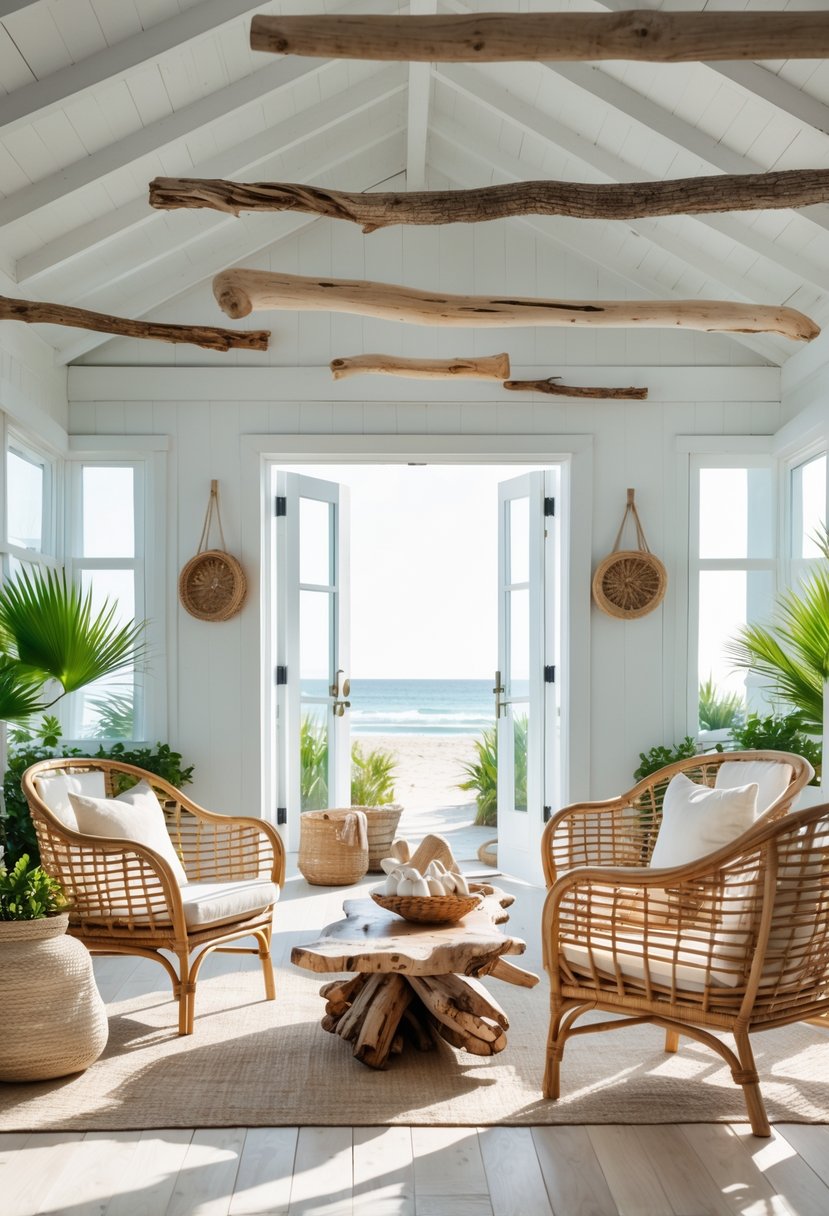
Using natural materials like driftwood and rattan adds texture and warmth to a beach house. Driftwood pieces create an authentic coastal feel with their weathered look.
Rattan furniture offers a lightweight, casual vibe while bringing organic shapes into the space. These materials connect the interior to the beach environment naturally.
3) Large windows and glass doors to maximize ocean views and natural light
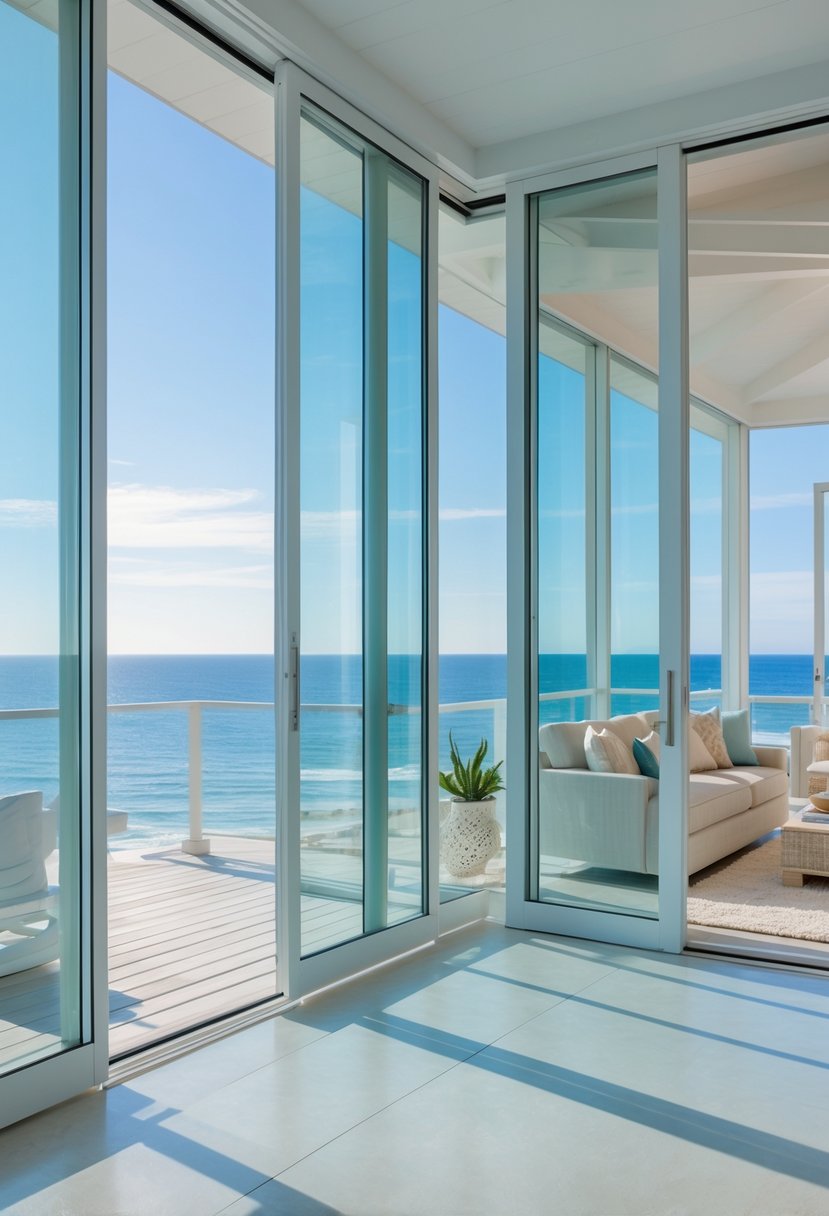
Large windows and glass doors bring in plenty of natural light. They help create a strong connection between indoor and outdoor spaces.
These features also offer wide ocean views from many angles. This design choice is common in modern beach houses to enhance light and scenery.
4) Coastal art featuring seashells, surfboards, and marine life
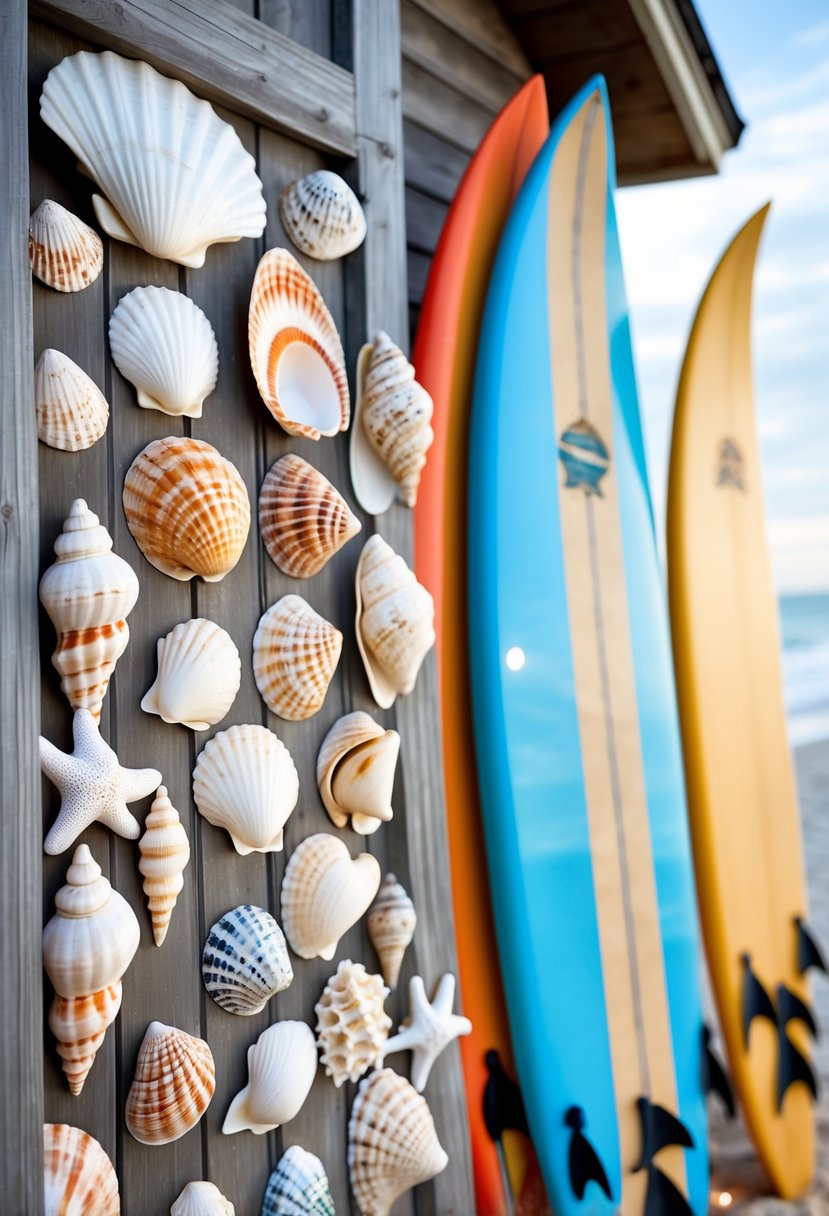
Coastal art often includes seashells, surfboards, and marine life as key elements. These pieces bring natural and beach-related themes indoors.
Seashell art can add texture and charm, while surfboard designs give a sporty, laid-back feel. Marine life motifs like fish or starfish connect the space to the ocean.
5) Custom woodwork including ceiling beams and built-in shelves
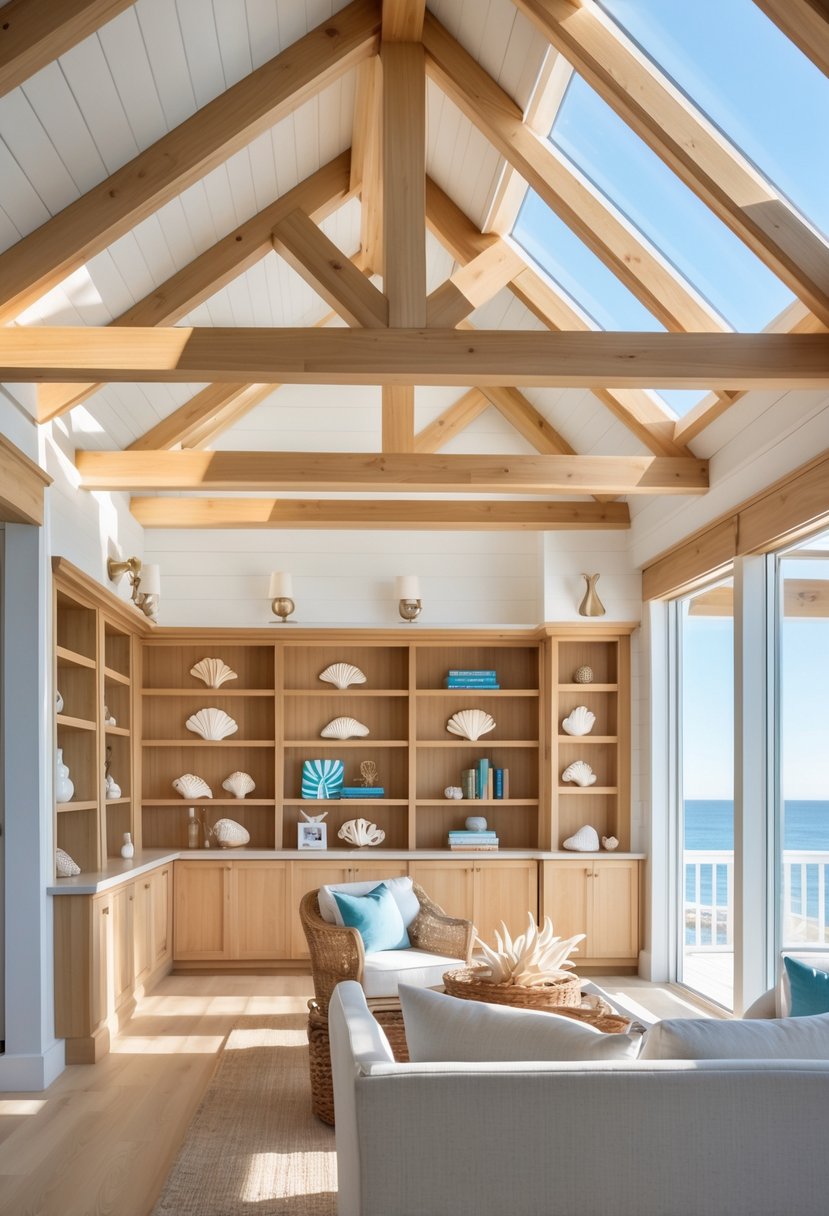
Custom woodwork adds a natural, warm touch to any beach house. Ceiling beams can create architectural interest while keeping a relaxed, coastal feel. Built-in shelves offer practical storage and display space without taking up extra room. These features combine style with function in a subtle way.
6) Neutral tones accented with navy blue and seafoam green
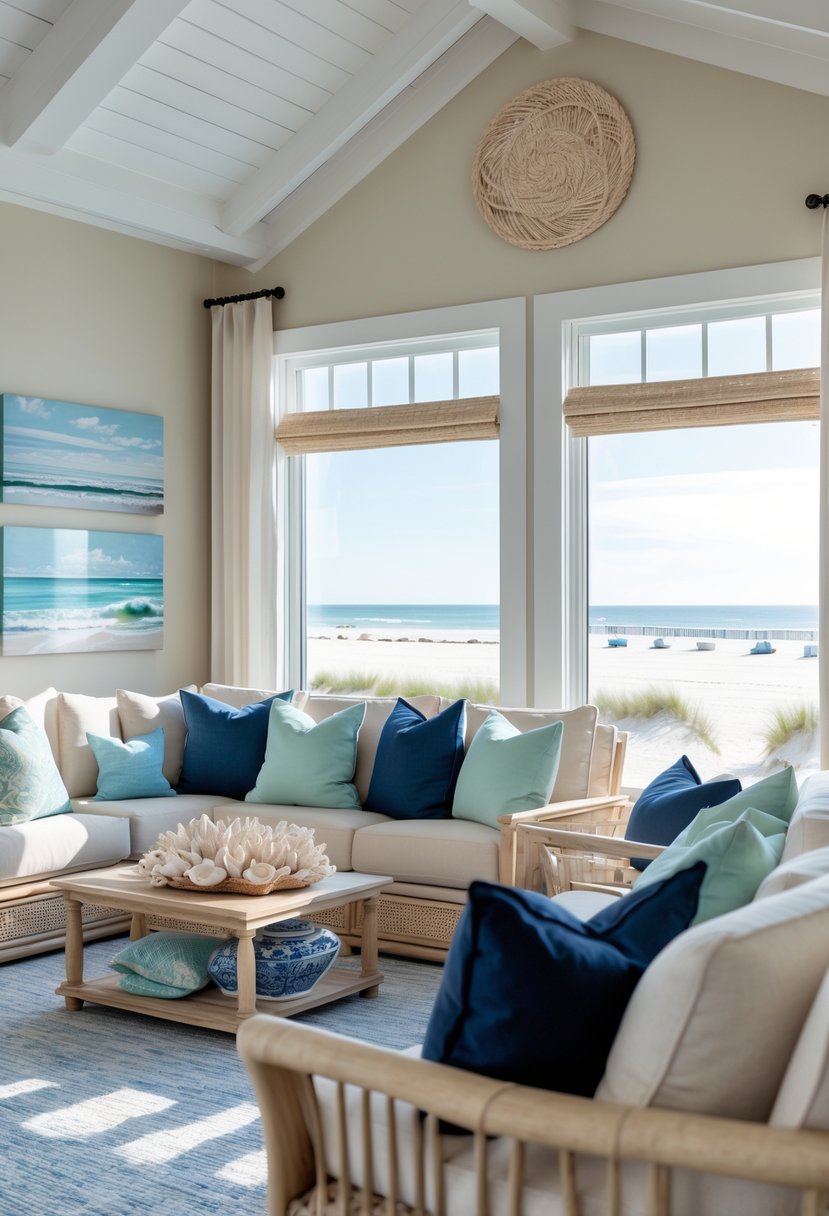
Neutral tones like beige and white create a calm, simple base for beach house design. Adding navy blue brings depth and contrast without overwhelming the space.
Seafoam green adds a soft, natural touch that echoes coastal plants and sea glass. Together, these colors balance warmth and coolness for a fresh, balanced look.
7) Open floor plans to create a breezy, relaxed atmosphere
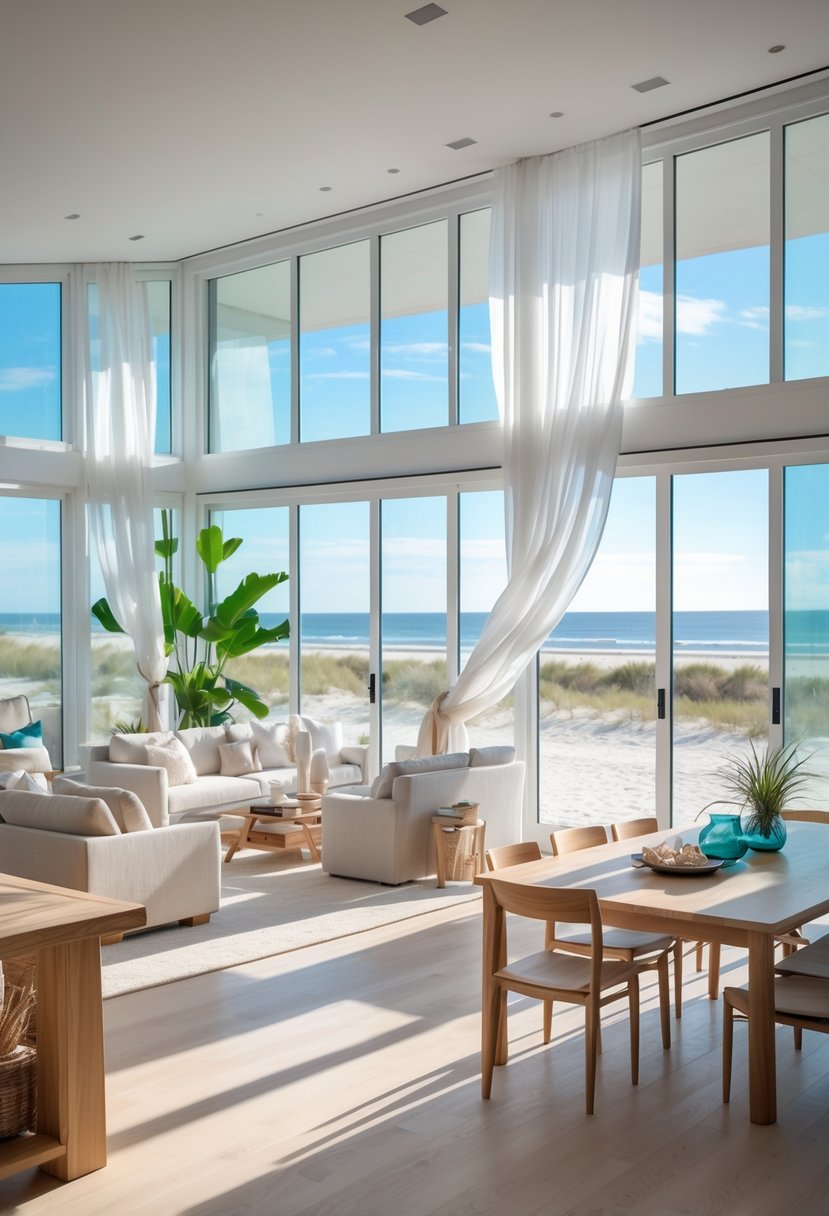
Open floor plans in beach houses remove walls to connect living, dining, and kitchen areas. This design allows natural light and air to flow freely through the home. It helps create a calm, open space that feels connected to the outdoors.
8) Bunk beds with nautical-themed bedding for guest spaces
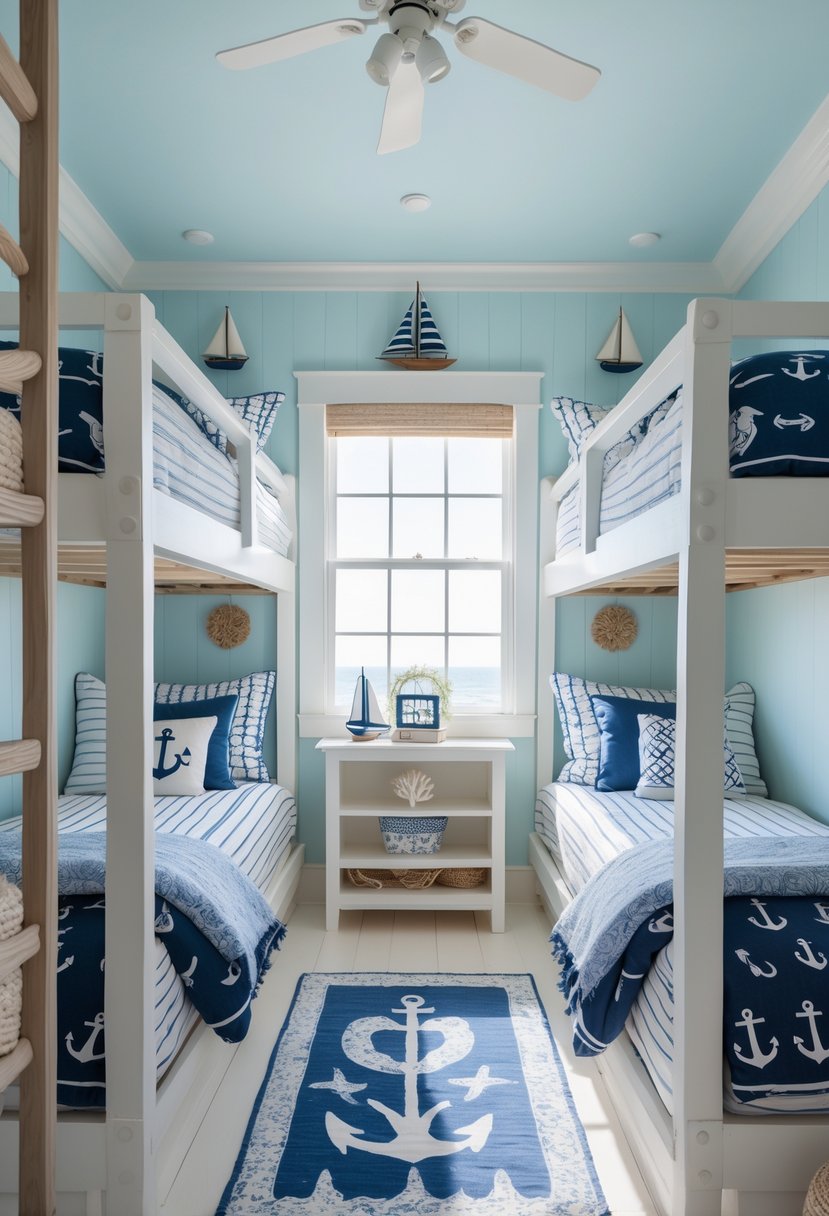
Nautical-themed bedding adds a simple, stylish touch to guest rooms with bunk beds. Patterns with anchors, starfish, and coral create a beachy feel.
This style works well for family stays or sleepovers, making the room both functional and inviting. Navy blue and white colors are common choices.
9) Use of woven textures such as jute rugs and wicker baskets
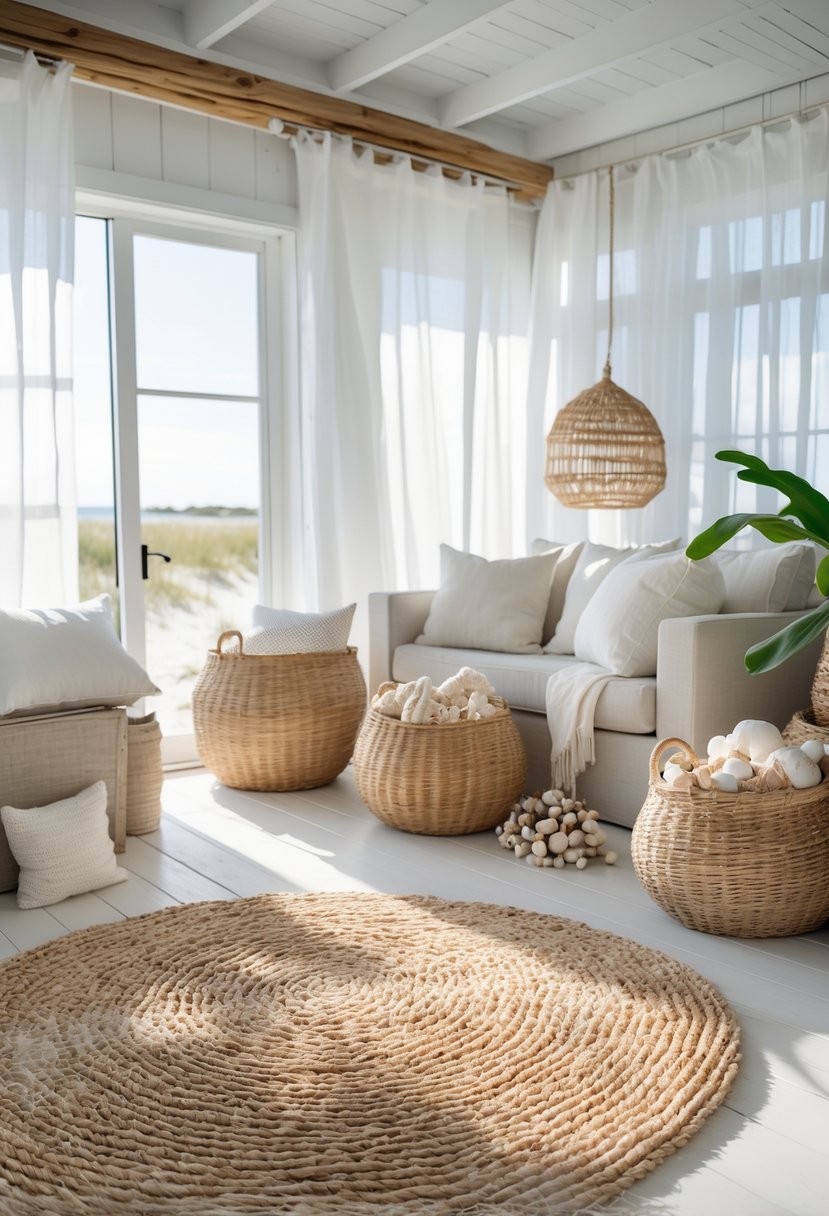
Woven textures like jute rugs add natural warmth and earthy tones to a beach house. They create a calm, grounded feel that fits well with coastal design.
Wicker baskets bring practical storage with a casual, organic look. Together, these materials enhance texture and comfort in the space.
Design Principles for Beach House Aesthetics
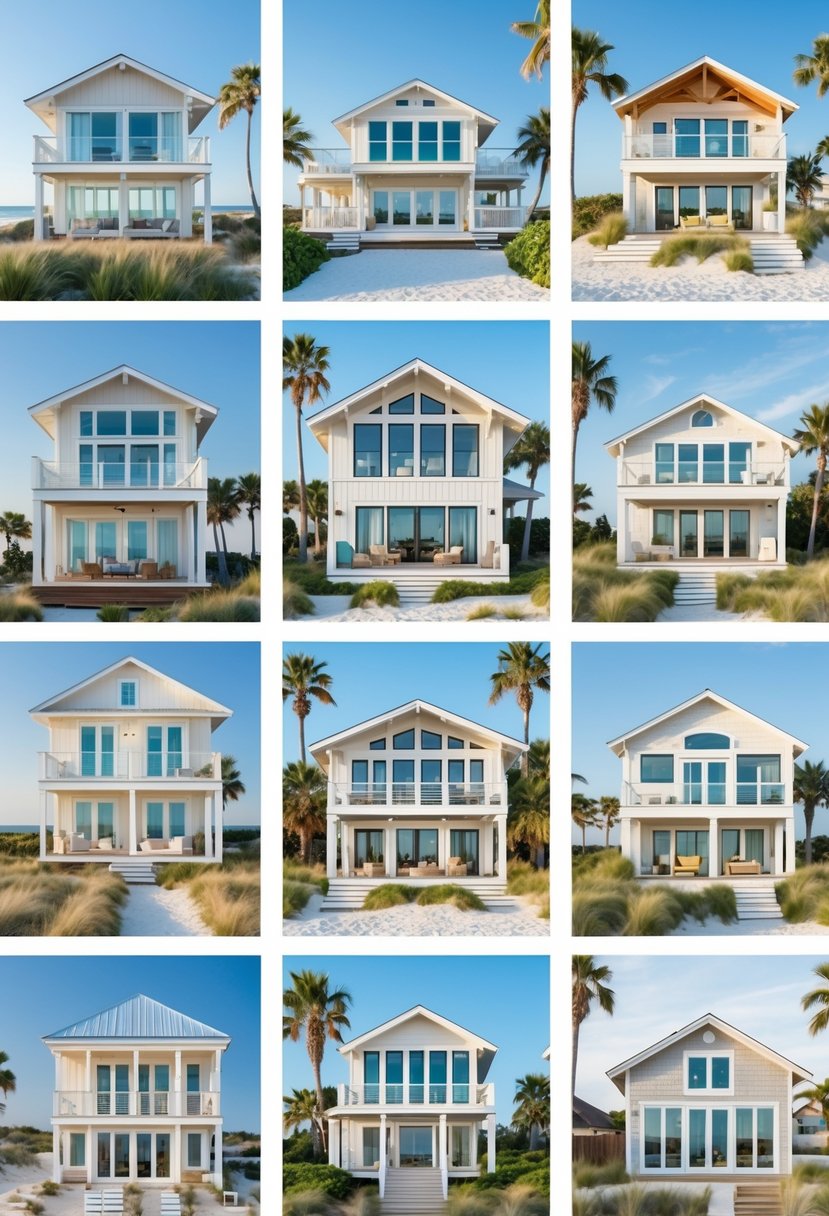
A successful beach house design focuses on seamless transitions between inside and outside living. It also uses colors that reflect the natural coastal environment. Understanding these elements helps create a space that feels open, bright, and connected to the beach.
Blending Indoor and Outdoor Spaces
Beach houses often include wide balconies, large sliding glass doors, or floor-to-ceiling windows to connect indoor rooms with outdoor areas. This design encourages natural light to flood inside, reducing the need for artificial lighting during the day.
Materials like wood and stone are used inside and outside to maintain a consistent feel and bring in natural textures. Open layouts without many walls also enhance flow, allowing fresh ocean air to move freely through the home.
The goal is to make outdoor spaces feel like extensions of the indoors, ideal for enjoying sea views and breezes. Furniture that is weather-resistant and easy to move supports flexible living both inside and out.
Color Palettes Inspired by the Coast
Coastal color schemes focus on light, calming tones that mirror the beach environment. Whites, soft grays, and pale blues create an airy atmosphere and reflect natural light.
Accent colors like sandy beige, seafoam green, or navy blue can add depth without overpowering the space. These shades work well on walls, furniture, or decor, reinforcing the seaside theme.
Using neutral colors on large surfaces helps keep the feel fresh and uncluttered. Pops of brighter colors should be limited to smaller items like cushions, artwork, or rugs for balance.
This approach keeps the home feeling relaxed and timeless, fitting for a beach retreat.
Materials and Finishes Unique to Beach Houses
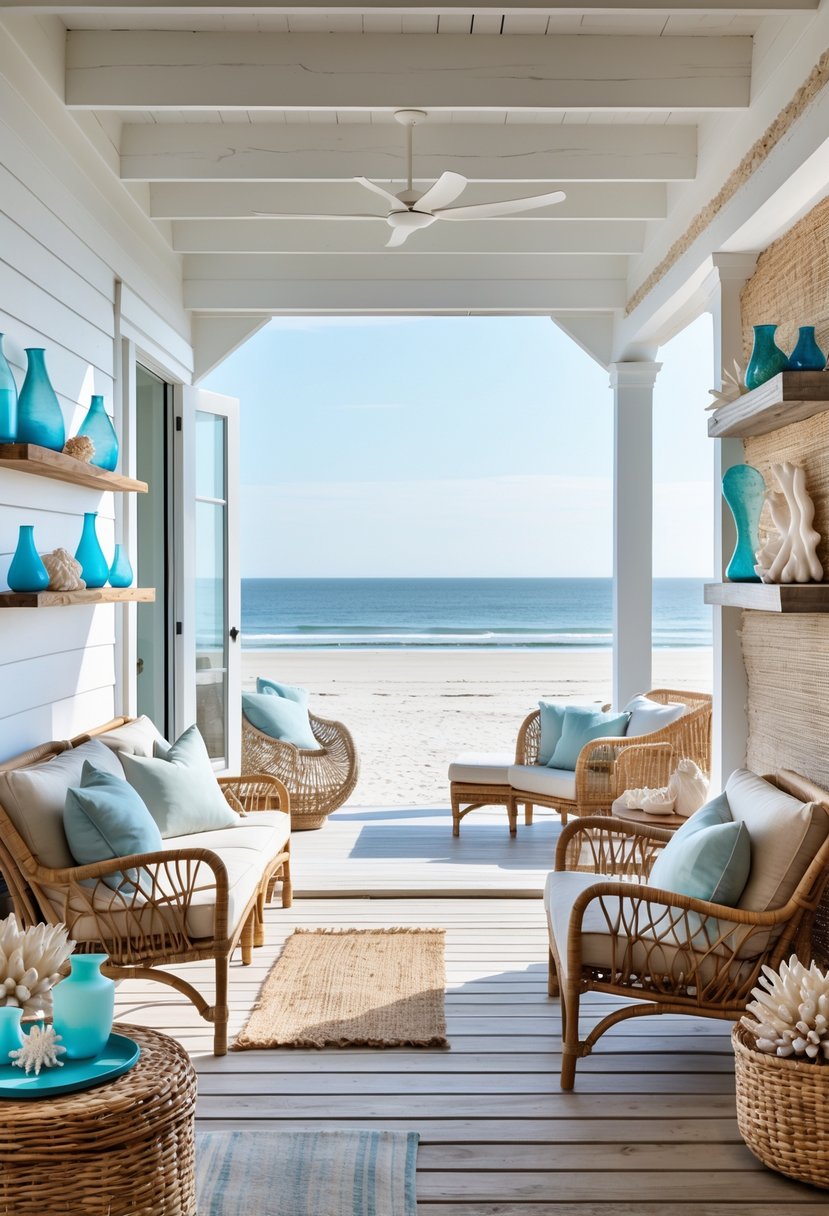
Beach houses require materials and finishes that can handle salty air, moisture, and sun exposure. Choosing the right elements improves the home’s lifespan and keeps it looking good over time. Durability and protection from weather play key roles in these choices.
Natural Materials for Durability
Natural materials like wood, stone, and bamboo are common in beach house designs because they combine strength with aesthetic appeal. Teak and cedar wood are popular for their resistance to rot and insects, making them ideal for decks and siding. Stone adds durability and a natural look while standing up well to coastal elements.
Using natural textures creates a smooth link between indoor and outdoor spaces. These materials age well and often look better with time as they develop a weathered patina. However, selecting hardwoods with natural oils or sealants is important to prevent damage from salt and moisture.
Weatherproofing Considerations
Weatherproofing in beach houses means protecting against wind, rain, salt, and sun. Materials that are moisture-resistant and rust-proof help avoid structural issues and costly repairs. Vinyl siding, fiber cement boards, and stainless steel fixtures are common choices.
Finishes like marine-grade paint or sealant protect surfaces from corrosion and UV damage. Windows often use double or triple glazing with durable frames to block salt air while maintaining views. Roof materials, such as metal or specially coated shingles, help prevent leaks and withstand strong coastal winds.
